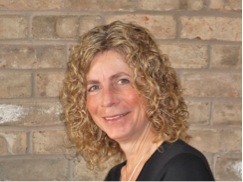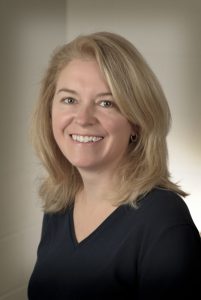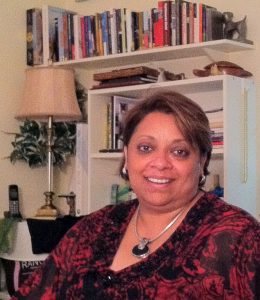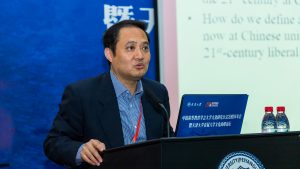Four York University professors with the Faculty of Education have been awarded Social Sciences and Humanities Research Council (SSHRC) Insight Grants—collectively totaling $570,474.
Connie Mayer will receive $184,311 for her research Literacy Outcomes of Deaf Learners: Updating the Evidence Base. Theresa Shanahan will receive $151,788 to investigate Policy Enactment in Ontario Schools: Teacher Professionalism in Practice. Roopa Desai Trilokekar will receive $155,382 for her comparative study International students are “ideal” immigrants: A critical discourse analysis of study-migration pathways in Canada, Australia and Germany. Qiang Zha will receive $78,993 for his project Diversification and Classification of Chinese Higher Education: An Exploration of State, Market and Institutional Forces.
“I want to congratulate our colleagues Connie, Theresa, Roopa and Qiang on being awarded these research grants,” says Lyndon Martin, Dean of the Faculty of Education. “Their individual projects are stellar examples of the ways in which research in our Faculty is contributing to research excellence and culture at York U.”
SSHRC Insight Grants empower constructive research in the social sciences and humanities and provide funding for two- to five-year initiatives. In supporting research excellence, the objective is to cultivate a deeper understanding of people, societies and the world.
Mayer notes advents like universal newborn hearing screening, cochlear implants, and advances in hearing aids and similar technologies has dramatically innovated the Deaf and Hard of Hearing (DHH) field—now offering access to language for DHH students through audition.
“The outcomes have really shifted, and this is something we are really just seeing in the past 10 years or so to have an impact,” Mayer says. “What that means educationally is it’s really important to look at who are the kids now doing better, what kinds of support they still need, which kids aren’t doing as well as we would like, and how to better support them.”
Collaborating with the Toronto District School Board (TDSB), working with upwards of 550 DHH students and employing standardized measures of reading and writing, Mayer and her team of researchers are collecting and analyzing up-to-date data of literacy achievement of DHH students in 2018. The results will help with impacting, planning and understanding how to best serve DHH students today.
Most DHH students are now educated in inclusive settings—not in schools for the deaf. “That’s a shift from 30 years ago, which means the ways in which the Ministry of Education has to plan and think about providing the best possible services for these kids has shifted,” Mayer says. “We have to start taking those changes into account and serve DHH students in light of what’s going on in 2018.”
Shanahan notes that despite the last two decades having seen a period of policy hyperactivity in Ontario around education and professional practice, little research has in fact studied how teachers understand, interpret and practice such policies.
“Understanding the working context of teacher professionalism within the complex regulatory regime is critical for transparent self-governance that serves the public interest,” Shanahan says. “This study will contribute to an empirical basis for understanding the working regulatory context of teachers’ professional practice, which will inform public policymaking and professional governance in this area.”
Shanahan’s critical policy sociology study employs policy enactment theory, critical textual analysis of crucial law and policy documents, and includes interviews with educators, school leaders and policy-makers to identify the “official” narrative of teacher “professionalism” in Ontario and to establish the range of regulation around teacher professionalism.
“That involves more than a myriad of laws and policies on paper. And achieving high professionalism involves more than passing more and more laws and policies,” she adds. “It involves the hearts and minds of educators in our classrooms and schools.
“The current legal landscape of education is exceptionally complicated and layered—yet we know very little about how all of it plays out in practice.”
Trilokekar’s four-year comparative study explores the implications of “international students are ideal immigrants” policy discourses, as seen in Canada, Germany and Australia—and particularly analyzes the impact of Canada’s own federal 2014 immigration education policy, intended to double the number of international students (IS) it receives each year by 2022.
“Ontario is very competitive in ensuring it maintains a global reputation and global image of itself,” says Trilokekar. “The Ontario government is definitely interested in hosting more IS and having proactive policy to translate IS into new immigrants.”
Conducting their comparison horizontally, vertically and transversally across Canada’s, Germany’s and Australia’s respective multi-stakeholder perspectives, Trilokekar’s team of five coresearchers and three graduate assistants will explore how federal and state governments, universities, businesses and settlement sector with the greatest IS populations influence this policy. In examining how each country’s unique social, cultural, historical and political contexts impact the policy abroad, one central objective is to better understand how universities become bigger players in immigration.
“I think this provides them a very wide scope of understanding on how policies are taking shape in different places and in different jurisdictions,” Trilokekar adds, “as well as where the gaps are in the policies here in Ontario.”
When Zha interviewed the Head of the Higher Education Department with China’s Ministry of Education—a man overseeing 37 million students in 2,900 universities and colleges in the world’s largest higher education system and second-largest economy—he was pleased to learn it was precisely his research focus of differentiation and diversity of Chinese higher education at the top of the academic’s agenda.
In their respective education system, Zha notes that employers, policymakers, researchers and practitioners currently explore the Chinese model of higher education and its substantial massification. Once offering access to only 10% of the higher education age cohort in the late ‘90s, the Chinese model now provides access to more than 45% today.
“My goal is to bring to Ontario’s attention the differentiation happening in China,” Zha says: “the merits and lessons, the pros and the cons in their practices and in their experiences.”
Currently conducting his study via 15 institutional cases interviewing Chinese policymakers, differentiation researchers and practitioners at the institutional level, Zha analyzes the successes of their research-intensive, regional, applied and private universities, as well as colleges and transnational institutions.
“The significance and impact of this project is the increasing, intensifying relationship for the collaboration between Canadian universities and Chinese universities—happening on a daily basis,” Zha adds. “It’s not just about our understanding how we can welcome more Chinese students; in the long-term, we could develop more meaningful collaborations—including research collaborations.
"It’s becoming more and more based on innovations.”




